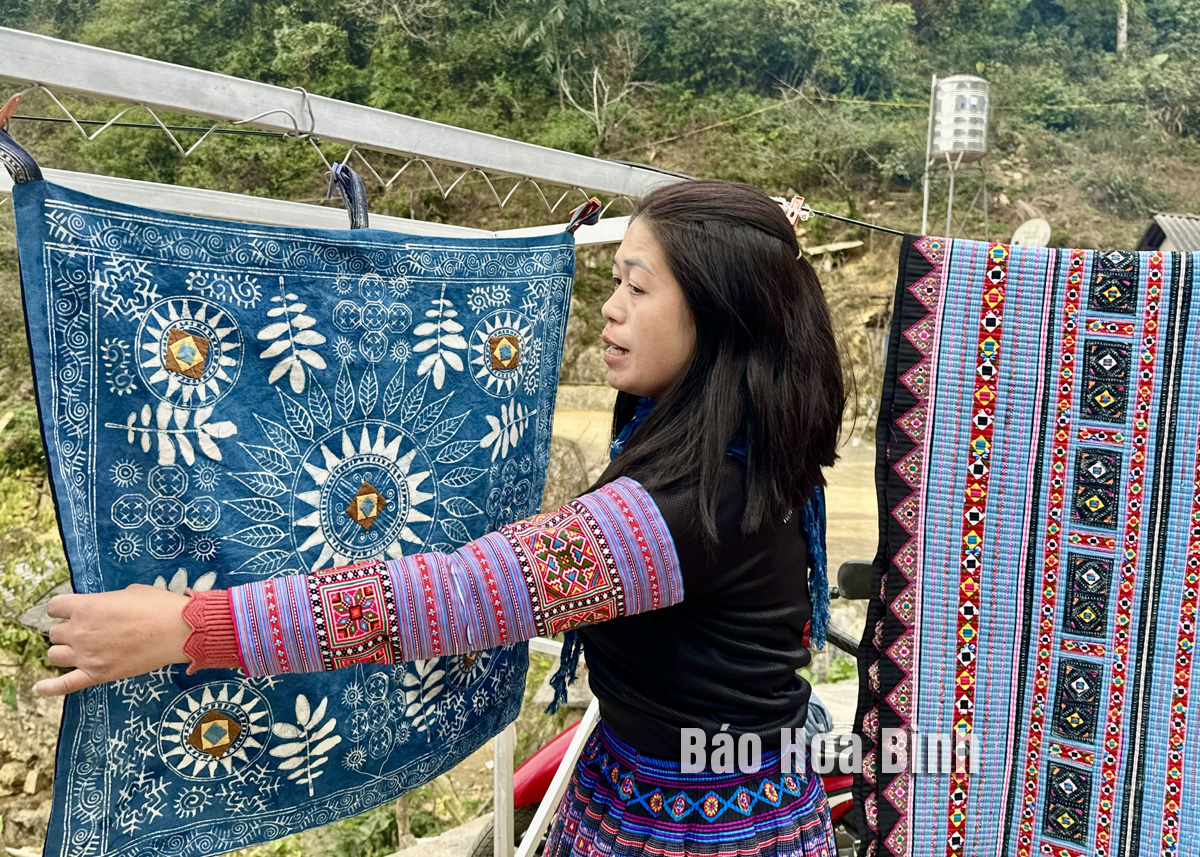


 The colorful brocade fabrics with
sophisticated patterns are woven by the skillful hands of women in Pa Co 1 hamlet,
Pa Co commune, Mai Chau district.
The colorful brocade fabrics with
sophisticated patterns are woven by the skillful hands of women in Pa Co 1 hamlet,
Pa Co commune, Mai Chau district.
Ms Mua Y Ganh, a brocade weaving artisan in Pa Co Commune said: There are very few brocade weaving artisans left. In modern life, ready-to-wear clothing and mass-produced brocade-patterned fabrics are widely available in the market at low prices. Therefore, the flax cultivation and brocade weaving craft of the Hmong people are gradually disappearing. H’Mong women know the craft but rarely practice it.
Since 2018, the community-based tourism model has been developed in several hamlets, making Pa Co an attractive destination. Besides the appeal of natural landscapes and experiential tourism products, the traditional brocade weaving craft is favored by many tourists. The weaving craft has been revived and the products have become increasingly diverse, not only for making traditional costumes, scarves and hats used in daily life, but also to largely meet the demand for souvenirs and gifts from tourists.
like other Mong women, Sung Y Thanh in Pa Co 1 hamlet, Pa Co commune learned from her mother how to grow flax, spin yarn and embroidery skills from young age, before getting married. Thanh shared: To create brocade products or traditional costumes, many stages are required. Each stage, from growing flax, spinning yarn, waxing, indigo dyeing, embroidering and sewing, requires meticulousness and skillfulness. Therefore, the talent, diligence and skillfulness of Mong women are often evaluated through their flax weaving skills.
The flax growing season in Pa Co takes place around March and April every year. The flax plants are harvested around July and August and the locals dry the flax in the sun and then strip it into fibers. The flax fibers are put into a mortar and pestle to soften and connect them; then rolled into round bundles for washing, boiled to soften and whiten the flax fibers before drying them in the sun. After finishing the flax processing, the Mong people use a reel to divide the fibers before putting them on the loom for weaving.
After the weaving process, the women use a heated copper pen to draw on the beeswax layer, creating patterns printed on the fabric. Then, they dye the fabric with indigo. When the fabric has a dark color, it is dipped in boiling water, causing the beeswax to melt and leave behind light blue patterns. Next step is the embroidery stage. The patterns on Mong clothing are mainly square, rhombus and rectangular shapes. Because they are handmade, they take a lot of time.
Through tourism activities, these handcrafted textile products have attracted much attention. Some establishments come directly to learn about and introduce these products, connecting them with consumers of brocade textiles. In the two communes, several craft groups have been formed, bringing together women to work together.
Sung Y Ganh, a member of the Pa Co 1 Hamlet craft group said: Since articipating in the work of creating these products, I feel proud and more aware of preserving the traditional craft of the H’Mong people. This is also a significant source of income that supports family life.
At the end of May, the Hoa Binh Provincial Ethnic Arts Troupe organized a series of performances for residents in Region 2 and Region 3 communes across the province. Bringing art to ethnic communities in remote, isolated, and especially disadvantaged areas has become a meaningful activity. These are not merely artistic performances but also journeys to disseminate cultural values, enrich spiritual life, and contribute to preserving the cultural identity of ethnic minorities.